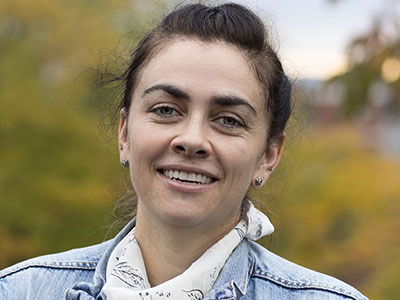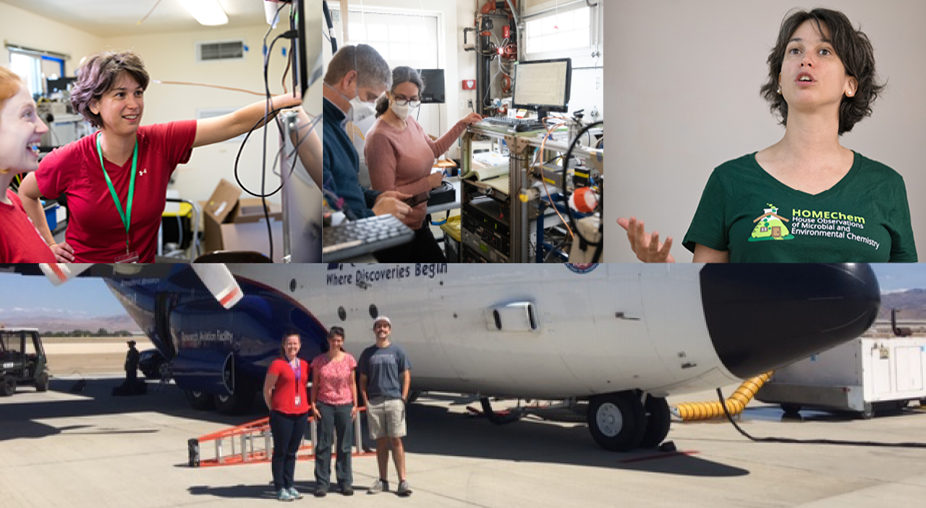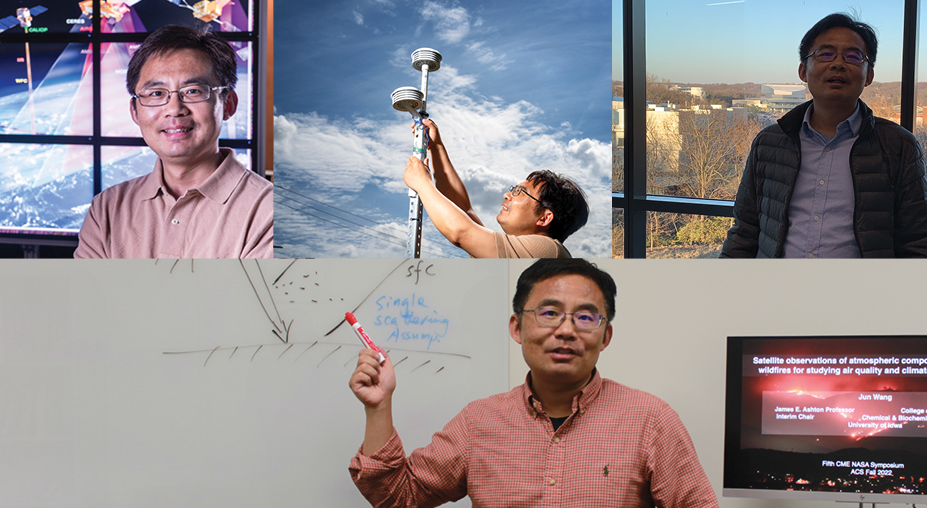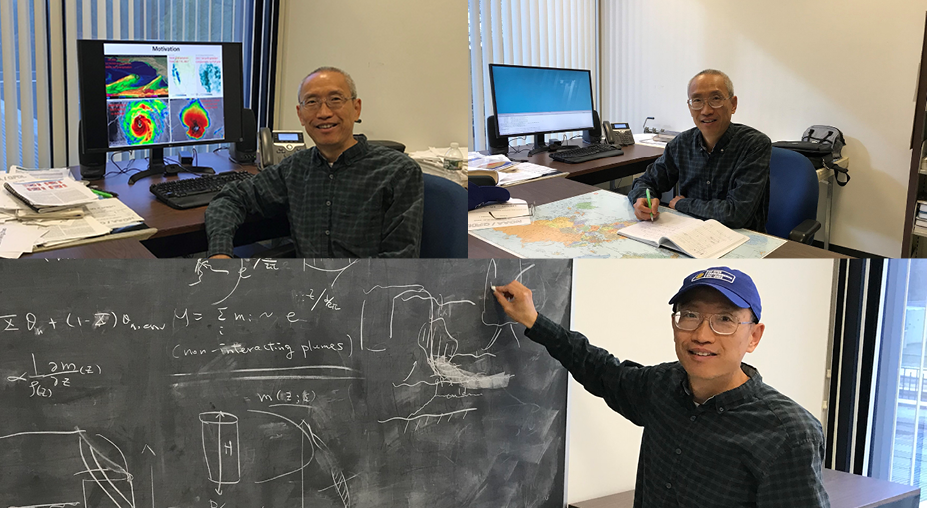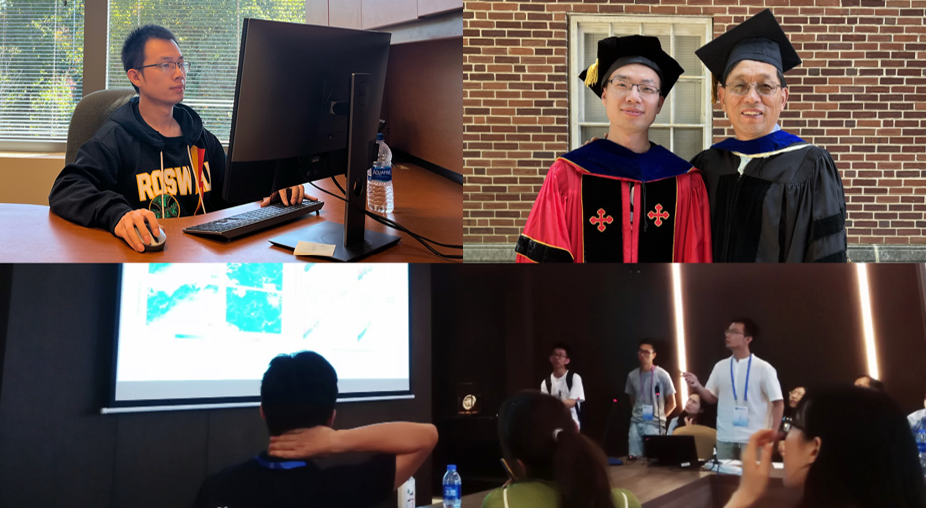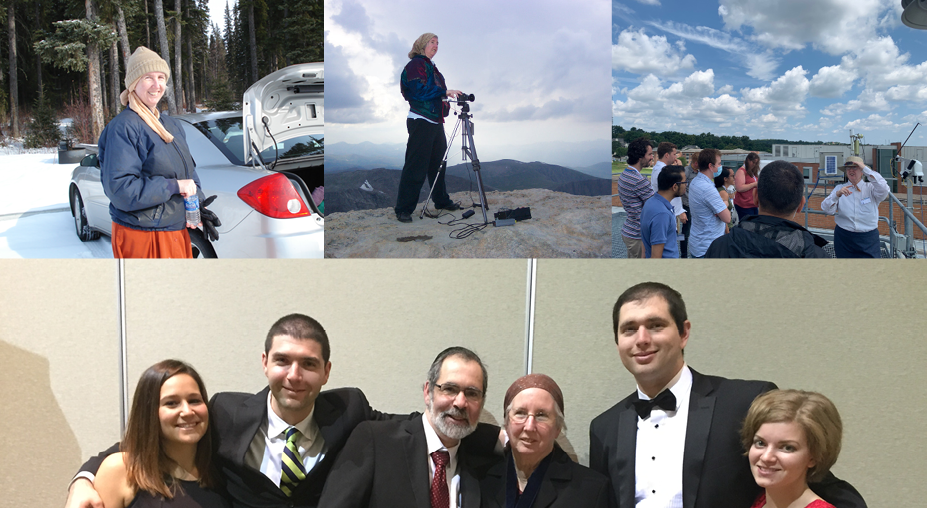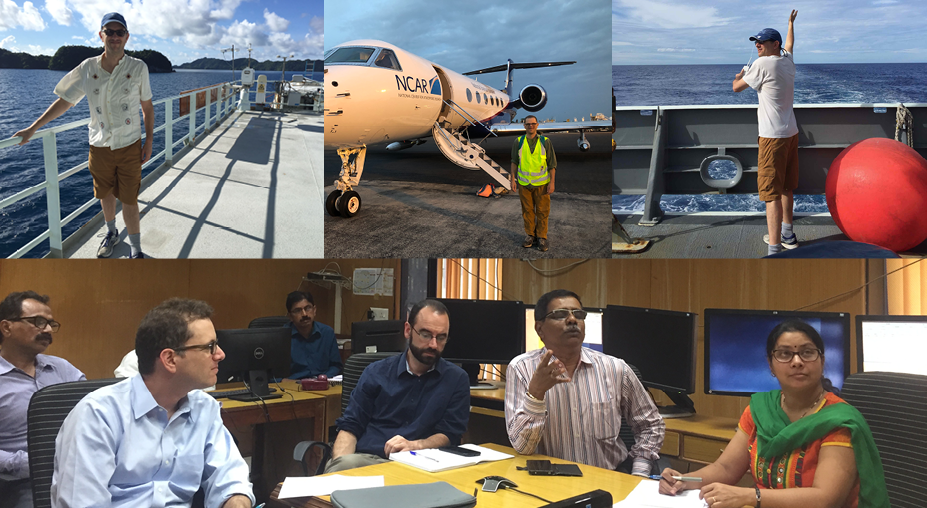Section Awards & Lectures
Atmospheric Sciences Awardees
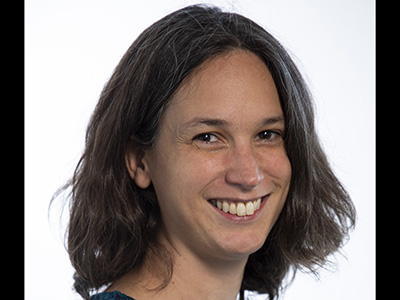
Citation
For her seminal contributions to our understanding of atmospheric chemistry both in and outdoors, Delphine Farmer has received the 2022 AGU Atmospheric Sciences Ascent Award.
Prof. Farmer’s research describes the atmospheric chemistry occurring in remote to highly complex indoor environments. Her expertise in indoor atmospheric chemistry was profoundly important these past 2 pandemic years—she has played a critical role in communicating how exposure to aerosol containing SARS-CoV-2 threatens public health and how to mitigate this threat.
Three major research thrusts characterize Prof. Farmer’s recent scholarship. First, in a series of field and laboratory studies, Farmer has led a community effort to study the aerosol chemistry of the home environment. She led the HOMEChem field study in 2018. In this study, she illustrated how both cooking and volatile chemical emissions associated with cleaning and fragrances increase aerosol exposure. She quantified and developed frameworks for describing the partitioning of chemicals with the diverse surfaces present in the home. These important studies have changed how the community understands the multiphase chemistry of the indoor environment. Second, she has made significant contributions toward describing the aerosol and gas phase dynamics of wildfire plumes. Her participation in WE-CAN and analysis of this important data set yielded a series of manuscripts that describe the photochemical aging of wildfire emissions and how they alter the amount, chemical composition/toxicity of aerosol, including describing the evolving optical properties of the aerosol. Third, from data she obtained in several ambient studies at forested field sites, Farmer described how biogenically derived chemicals such as isoprene and monoterpenes are oxidized to form organic aerosol and small carboxylic acids. This body of work has helped answer a question that has eluded our community: Where do all the small carboxylic acids measured both in the gas phase and in rainfall come from?
The body of work contained in any one of these thrusts would be sufficient for recognition with the Ascent Award. That she has had such impact in all three is remarkable.
Finally, although the Ascent Award is focused on research, Delphine’s efforts to build community must be recognized. Prof. Farmer helped initiate, and cohosts, the virtual Frontiers in Atmospheric Chemistry Seminar Series that routinely attracts hundreds of attendees from around the world. This single act of generosity in service has enriched so many during these particularly difficult past 2 years.
—Paul Wennberg, California Institute of Technology, Pasadena
Response
I am delighted to receive the AGU Atmospheric Sciences Ascent Award on behalf of the many people who supported me in developing my career and scientific interests. I thank Paul Wennberg for his kind nomination, and Ron Cohen, Allen Goldstein, and Jose Jimenez for their support, not only of my nomination but also of my career. In particular, Ron Cohen (my Ph.D. adviser) and Jose Jimenez (my postdoctoral adviser) fostered my curiosity and encouraged me to always question ideas, both established and new.
Atmospheric chemistry is inherently collaborative and centers around scientists with different approaches to field, laboratory, and modeling studies working together to solve impactful problems. The strength of the field lies in its diversity of perspectives. The work for which I am cited is not “mine” but is instead the result of collaborations with many thoughtful scientists from around the world who deserve recognition. Most important to this research are the graduate students, postdoctoral researchers, and research scientists in my group. They are truly the ones pushing the way we think about problems, and I look forward to seeing what scientific puzzles and curiosities we find next.
I am particularly grateful to the many friends that I found among colleagues and coworkers—they not only supported my research but also made it fun.
The atmospheric and indoor chemistry communities created a welcoming environment for me, helping me navigate new topics and build a career. I hope that environmental chemists at all career stages continue working together to ensure that our field is inclusive and truly open to a diversity of researchers.
—Delphine Farmer, Colorado State University, Fort Collins
Field Photos
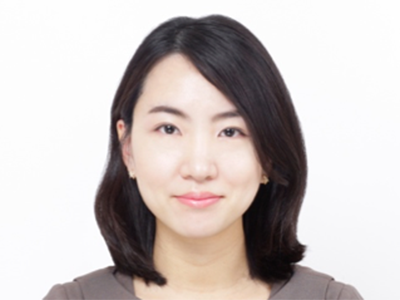
Citation
Sarah Kang is an outstanding climate dynamist who has made fundamental contributions to predictive understanding of extratropical influences on tropical rainfall distribution. The theoretical framework she pioneered is now widely adopted for a range of problems from the northward displaced tropical rainband to climate response to anthropogenic radiative forcing. Her theoretical interpretations combined with elegant numerical simulations are distinctive. Her work on cross-equatorial energy transport proved reliable and useful in guiding the development of full-physics global climate models (GCMs).
Sarah has shown an ability to embed her intellectual leadership in organizational initiatives that raise the overall level of our science. This is evident through her organization of the Extratropical-Tropical Model Intercomparison Project (ETINMIP), which has inspired renewed interest in ocean overturning circulation in the context of cross-equatorial energy transport. Her research has evolved from the zonally uniform aqua-planet to realistic settings to tackle problems of great importance and relevance. Her recent work relates, in a novel way, low-cloud feedback to the long-standing biases of coupled GCMs in simulating cross-equatorial climatic asymmetry.
Sarah has revealed fundamental insights into the physical mechanisms of how the coupled ocean-atmosphere system responds to radiative perturbations. These insights have clarified the processes underlying the overall response of the atmosphere and oceans to anthropogenic drivers of climate change, especially that due to aerosol emissions. Such fundamental understanding is extremely important for assessing climate model projections, and for attributing the observational record of climate trends. Sarah’s work in this area is foundational for its depth of insight and rigor of approach.
Her pioneering work that changed our view of tropical-extratropical climate interactions, as well as her community leadership, makes her highly deserving of the recognition of an AGU Atmospheric Sciences Ascent Award.
—Shang-Ping Xie, University of California, San Diego
Response
I am deeply honored and humbled to be the recipient of the Ascent Award. My gratitude goes to the nominators and selection committee for their time and effort in making this award possible.
My accomplishments were only possible because I have been surrounded by great mentors. I specifically thank my Ph.D. adviser, Isaac Held (Princeton University), for guiding me to develop the energetics framework. I feel privileged and proud to be a member of the Held family. During my Ph.D. at Princeton, I had an opportunity to interact with Shang-Ping Xie (University of California, San Diego), who was visiting the Geophysical Fluid Dynamics Laboratory (GFDL) for his sabbatical. I had not realized then that we would be working together on so many exciting projects! I truly value and enjoy our collaboration and feel fortunate to have you as my mentor. I am also grateful to my great female role model, Clara Deser (National Center for Atmospheric Research), through whom I gained courage to pursue my career while raising two children. I would also like to thank Bjorn Stevens (Max Planck Institute for Meteorology), whom I admire deeply, for unwavering support of my career.
I would like to share this recognition with my brilliant graduate students who have worked with me over the past 10 years. They have contributed significantly to all the accomplishments mentioned in the citation. I am truly blessed to have worked with responsible, enthusiastic, and sincere young fellows.
Most of all, I thank my husband, Hyun, and our two children, Jeen and Hannah, for being supportive of my career. I would not have come this far without their love and support. I dedicate this award to my father, In-Sik Kang (Seoul National University), for he has been the greatest inspiration for me. He has shown me how enjoyable and rewarding a life can be as an atmospheric scientist. Last, I thank my mother, Jeounghee, for your unconditional love.
—Sarah Kang, Ulsan National Institute of Science and Technology, Ulsan, South Korea
Field Photos
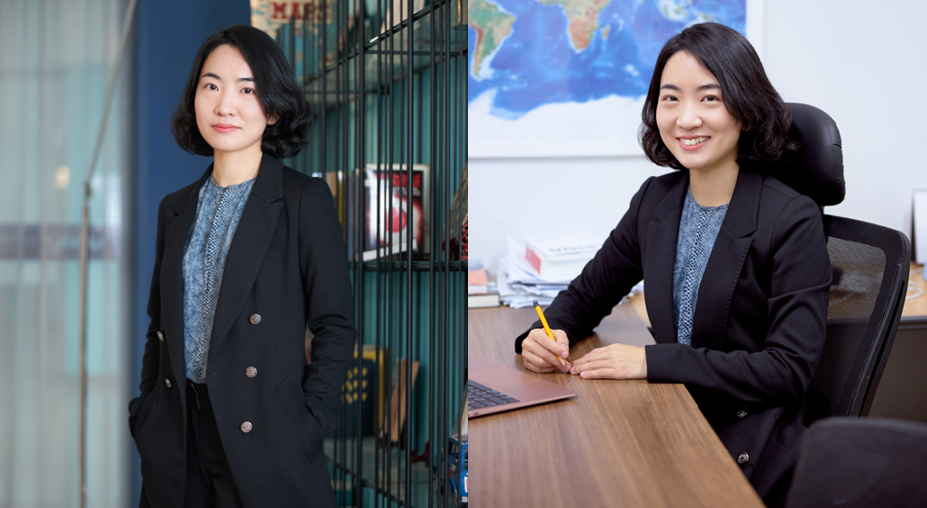
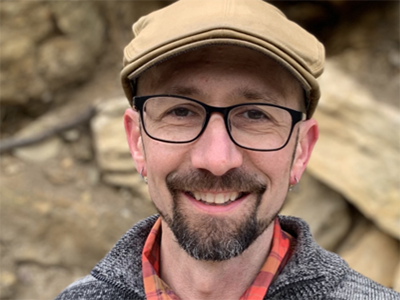
Citation
Dylan Millet is a leader in combining measurement and modeling techniques to advance our understanding of volatile organic compounds (VOCs) and their impacts on atmospheric composition, air quality, and climate. His team has been at the forefront in applying high-resolution mass spectrometry to investigate sources and sinks of atmospheric VOCs. The approach is groundbreaking in allowing simultaneous measurement of hundreds of VOCs across the mass spectrum to gain insights into VOC chemical mechanisms and budgets at ecosystem to regional scales. His work has combined this advanced measurement technology with forward and inverse modeling in several important studies. These include collecting the first-ever long-term tall-tower (200-meter) VOC measurements and applying these data sets in a series of papers to characterize the sources and chemistry of key VOCs. He has also extended these measurement techniques to the eddy covariance approach to improve mechanistic understanding of how bidirectional forest-atmosphere VOC exchange drives atmospheric composition.
He is also a leader in applying space-based observations of VOCs with chemical transport modeling to understand regional- to global-scale budgets. His team was the first to demonstrate the possibility of direct retrievals of isoprene from space. This seminal work set the stage to transform our understanding of atmospheric VOC sources and chemistry, in particular over critical parts of the world (e.g., the tropics) where in situ measurements are sparse. This new capability has helped to constrain hydroxyl radical (OH) abundance from space over isoprene source regions, where it is notoriously difficult to measure.
Dylan’s team uses these novel data sets to advance the development of GEOS-Chem, a leading global atmospheric chemistry and transport model, which is used extensively within the atmospheric sciences community. His group has been pivotal in improving our ability to simulate VOCs and to better quantify their sources using observations. Overall, Dylan’s important contributions to improved in situ surface and satellite observations, model development, and the training of the next generation of atmospheric science students have advanced our understanding of atmospheric composition and chemistry.
—Tim Griffis, University of Minnesota, Twin Cities
Response
I am grateful to Tim for the nomination, and to the mentors and colleagues who wrote letters for this award and have supported me in many other ways over the years. It is an honor to be recognized alongside the other current and previous Ascent recipients who have contributed so much to our field.
The research behind this award was performed by an entire team, and especially by the outstanding students, postdocs, and scientists who I have been lucky to host in my group. I also want to acknowledge many collaborators beyond our group. I find that much of the most exciting science in atmospheric chemistry occurs when we combine measurement and modeling tools to test current understanding—and that kind of work would be impossible without a network of talented and generous colleagues.
I am very happy to accept this award and hope to pay forward the mentoring and support that I’ve received along the way!
—Dylan B. Millet, University of Minnesota, Twin Cities
Field Photos
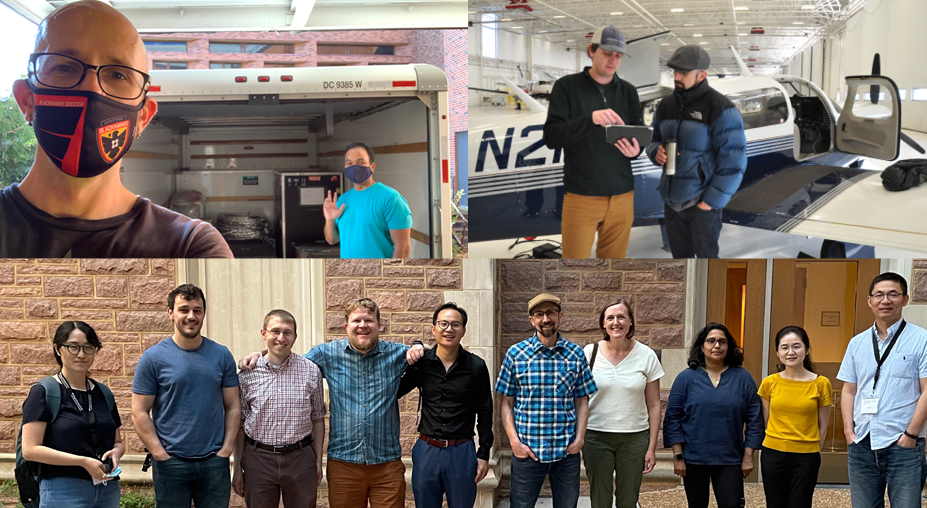
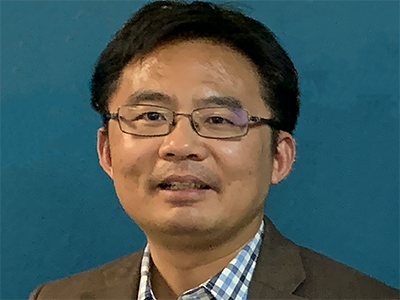
Citation
Dr. Jun Wang is an internationally recognized leader in the field of remote sensing of aerosols and fires. He has been a science team member of 10 different satellite missions. His research efforts include many major advances in satellite algorithm physics for shortwave remote sensing. They have shed new light for gaining more insights on aerosol and fire properties from space. His research has spanned from being one of the first in satellite remote sensing of surface particulate matter air quality to the development of seminal algorithms for passive sensing of aerosol layer height and fire combustion efficiency (phase) to the most recent groundbreaking work of using satellite-measured backscattered moonlight to map the transport and optical depth of smoke particles at night and advanced aerosol retrievals from hyperspectral measurements. Equally illuminating is his team’s recent work of mapping aerosol plume height, for the first time, in each hour from the NASA DSCOVR (Deep Space Climate Observatory) satellite.
On the modeling front, Dr. Wang has an evident track record of innovative application of satellite data to improve modeling and understanding of air quality and atmospheric composition (often via data assimilation). By assimilating the aerosol and fire products from geostationary satellites into a regional atmospheric model (RAMS), his early work attested to the importance of diurnal variations of dust and smoke aerosol emissions to the modeling of the surface energy budget and boundary layer process. Subsequent collaborative work led by him was 4D-VAR assimilation of Moderate Resolution Imaging Spectroradiometer (MODIS) radiance data and OMI sulfur dioxide (SO2) data to constrain the sources of dust and SO2 emissions, respectively; this was seminal at that time in the field of chemical data assimilation.
Dr. Wang is known for his genuine generosity and his passion for collaborative research that have served our community well. For example, the numerical test bed that he and his team developed for satellite remote sensing of aerosols is accessible to the public and used by approximately 40 research groups around the world. In summary, Dr. Wang’s scholarly productivity and originality, along with his outstanding service to the AGU and atmospheric science communities, epitomize the qualities recognized by the Ascent Award.
—Kelly Chance, Center for Astrophysics, Harvard & Smithsonian, Cambridge, Mass.
Response
I am delighted and honored to receive the 2022 AGU Ascent Award. I am grateful to my nominator, Kelly Chance, and supporters for their precious time spent in the nomination process. I thank the selection committee for this empowering and wonderful recognition.
For the past 20 years, I have had the pleasure and privilege to learn from and work with many individuals in the field of atmospheric sciences, especially at the intersection of atmospheric composition and climate change. I thank my Ph.D. adviser, Sundar A. Christopher (University of Alabama in Huntsville), and my postdoctoral advisers, Scot T. Martin and Daniel J. Jacob (Harvard University). Their support and mentorship not only shaped my early research trajectory but also instilled in me the confidence and the desire to challenge myself often in pursuit of new research directions. I thank all the former and present members of my research group and would like to share this recognition with them. I also extend my appreciation to my research collaborators, including Peter R. Colarco, David J. Diner, Daven K. Henze, Edward J. Hyer, Charles M. Ichoku, G. Darrel Jenerette, Shobha Kondragunta, Robert C. Levy, Xiong Liu, Steven D. Miller, Jeffrey S. Reid, Arlindo M. da Silva, Eric M. Wilcox, John E. Yorks, and many more. Their generosity and wisdom have helped me in research areas from satellite remote sensing of atmospheric composition to chemical data assimilation and satellite mission development. My gratitude also goes to the faculty and staff at the University of Iowa for their tremendous collegiality.
I am thankful to the research programs (and the program managers thereof) in NASA, NOAA, U.S. Department of Agriculture, National Science Foundation, and Office of Naval Research that have funded (and managed) my research projects. I thank my colleagues in NASA and NOAA for their team spirit to tackle day-to-day operational challenges (during the pandemic) in providing the satellite observations to users (like myself) in the research and application communities. I look forward to the successful launch of the TEMPO (Tropospheric Emissions: Monitoring of Pollution) satellite mission led by Dr. Kelly Chance, as it will provide the first-ever hourly mapping of atmospheric gas pollutants over North America.
Finally, I am in debt to my wife, Jing Zeng, our parents, and our three children, Kerry, Cindy, and Justin, for their love and support. Without them, I would not have been able to make any of the achievements mentioned in the citation.
—Jun Wang, University of Iowa, Iowa City
Field Photos
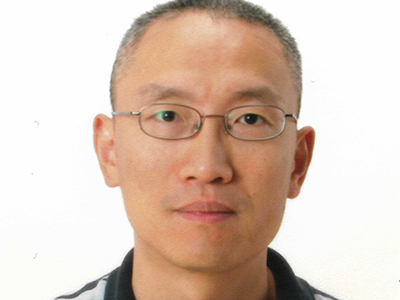
Citation
Ming Zhao is a rare and exceptional climate scientist, conducting outstanding research while also being unusually talented in the development of rigorous climate models.
As scientists around the world make use of the Coupled Model Intercomparison Project (CMIP) data, they have dedicated scientists like Ming to thank for generously developing and contributing top-rate climate models and model data to the latest CMIP6 archive. Ming successfully led a Geophysical Fluid Dynamics Laboratory (GFDL) team that developed the AM4 model over a 4-year period, a model that lies at the core of GFDL’s CM4, ESM4, and SPEAR climate models. These are now some of the world’s leading global climate models (GCMs) for various climate prediction and climate change applications. The models exhibit particularly high quality climate simulations of clouds, precipitation, top-of-atmosphere radiative fluxes, cloud feedbacks, Madden-Julian oscillations, tropical cyclones, and sea surface temperatures. However, such high-quality models as AM4 require long lead time and dedicated efforts by Ming and his model development colleagues at GFDL and other modeling centers. It is therefore a fitting tribute that a leading atmospheric and climate model developer now receive the 2022 AGU Ascent Award.
Ming’s research accomplishments and scientific findings to date have also been outstanding—focused on challenging topics with extensive societal and economic implications.
In 2009 he published a breakthrough study on simulating year-to-year Atlantic hurricane variability using the HiRAM (High-Resolution Atmospheric Model) global atmospheric model with prescribed sea surface temperatures. This work demonstrated that Atlantic hurricane year-to-year variability is controlled, to a surprising degree, by sea surface temperature variability and that HiRAM successfully captured this influence. These results greatly increased the credibility of HiRAM model projections of hurricane activity under global warming.
His 2016 study demonstrated that uncertainty in GCM-simulated cloud feedbacks and climate sensitivity is largely traceable to representations of cumulus precipitation microphysics, which is highly uncertain in current GCMs. This has important implications for understanding climate sensitivity and for future climate observing needs. His latest study on climate sensitivity reinforces the importance of vegetation, sea ice concentrations, and sea surface temperature warming patterns for climate sensitivity in coupled models.
Recently, he explored how extreme precipitation from atmospheric rivers, tropical storms, and mesoscale convection systems may change in warmer climates. He has also been very active in developing and using an entire hierarchy of models for studies of convection, clouds, radiation, and dynamics.
For Ming’s growing research accomplishments and leadership in climate model development, the AGU Ascent Award is a fitting recognition.
—Thomas R. Knutson, Geophysical Fluid Dynamics Laboratory, NOAA, Princeton, N.J.
Response
It is a great honor to be one of the recipients of the 2022 AGU Ascent Award. I appreciate this recognition of my research, and I would like to thank my nominators and the awards committee for this honor.
I am fortunate to have worked on many exciting projects with amazing mentors and colleagues. First, I would like to thank my Ph.D. adviser, Phil Austin, for introducing me to cloud modeling at the University of British Columbia. I thank Isaac Held, Steve Klein, and Chris Bretherton for bringing me into the first atmospheric Climate Process Team project, which provided me with an excellent opportunity to work with many outstanding colleagues on cloud feedbacks to climate sensitivity and climate model development. My accomplishment would be impossible without the fantastic working environment and colleagues at NOAA’s Geophysical Fluid Dynamics Laboratory (GFDL), who have supported and encouraged my scientific and model development pursuits. For many years at GFDL, I was extremely fortunate to have Isaac Held as my adviser, who provided me with endless encouragement and mentorship and helped me to establish my career at GFDL. I am indebted to Tom Knutson, who motivated and inspired my research on tropical cyclones, extreme weather, and their response to the changing climate and provided me with much generous advice, support, and encouragement. I am grateful to many of my colleagues both within and outside GFDL, including Isaac Held, Tom Knutson, V. Ramaswamy, Gabriel Vecchi, Shian-Jiann Lin, Masaki Satoh, Chris Bretherton, Bjorn Stevens, Ruby Leung, Minghua Zhang, Brian Mapes, Stephen Klein, and Chris Golaz, for their inspiration and encouragement.
Finally, I would like to thank my family, especially my wife, Lihua Yin, and our children, Michael and Anna, for their love and support.
—Ming Zhao, Geophysical Fluid Dynamics Laboratory, NOAA, Princeton, N.J.
Field Photos
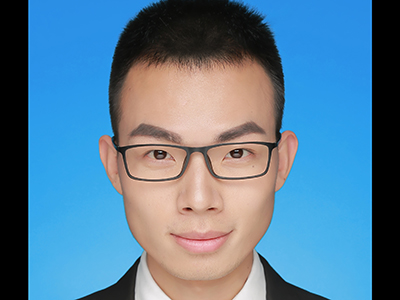
Citation
The Atmospheric Sciences section of AGU is pleased to present the 2022 James R. Holton Award to Dr. Jing Wei, University of Maryland, College Park, for “his exceptional contributions to satellite remote sensing of aerosols, particulate matter and trace gases, and assessing the impacts of air pollution.”
Jing Wei’s primary expertise lies in studying atmospheric aerosols, particulate matter, trace gases, and clouds by means of satellite remote sensing, big data, and artificial intelligence. Using such state-of-the-art tools, he has developed a suite of remote sensing models and applied them to satellite data, in situ measurements, and meteorological and environmental data sets to develop long-term, daily high-resolution products with high accuracies. Major improvements have been made in detecting satellite clouds and cloud shadows, retrieving aerosol optical depth (AOD), and estimating ground-level ambient air pollutant concentrations (e.g., PM1, PM2.5, PM10, O3, NO2, SO2, and CO) across and beyond China using data from both polar and geostationary satellite sensors. He has exploited the use of these products to investigate their spatial and temporal variations in order to understand their natural and anthropogenic causes. These novel products have been widely used to address a variety of atmospheric, environmental, ecological, and public health issues.
In just a little over a year and a half after obtaining his Ph.D., Jing has already published over 50 SCI papers as the lead or corresponding author in leading journals, such as Remote Sensing of Environment, Environmental Science & Technology, Journal of Geophysical Research: Atmospheres, Atmospheric Chemistry and Physics, and IEEE Transactions on Geoscience and Remote Sensing, of which six were selected as ESI Hot (top < 0.1%) papers and 11 as Highly Cited (top < 1%) papers, with over 3,000 citations and an H-index of 30. He is on the Stanford University list of World’s Top 2% Scientists (2021). Jing is also keen in providing community services, serving as an editor of Earth System Science Data and on the editorial boards of Remote Sensing, International Journal of Digital Earth, and Big Earth Data. He has received several awards in China, including the Li Xiaowen Remote Sensing Science Youth Award (2019), the Gao Tingyao Environmental Protection Outstanding Youth Award (2020), and the Zhou Tingru Geography Youth Award (2021).
On behalf of the AGU Atmospheric Sciences section, I am pleased to present the 2022 James R. Holton Award to Dr. Jing Wei.
—Renyi Zhang, Texas A&M University, College Station
Response
It is my great honor and pleasure to be selected as the recipient of the 2022 Atmospheric Sciences section James R. Holton Award. Needless to say, I was surprised when I received the email from the AGU Honors team. There is no doubt that this award is particularly important and inspiring to me at this very early stage of my career.
I would like to thank the AGU Atmospheric Sciences section, the award committee, and the Honors selection team. I am sincerely and deeply grateful to my Ph.D. adviser, Prof. Zhanqing Li at the University of Maryland, College Park. Under his careful tutelage, I learned how to conduct innovative research, always aiming for high standards and exercising rigor. Many thanks also go to my M.Sc. adviser, Prof. Lin Sun at the Shandong University of Science and Technology, who introduced me to quantitative satellite remote sensing, opening the door for me to pursue scientific research in atmospheric science. I thank Drs. Yiran Peng, Jun Wang, Russell R. Dickerson, and Alexei Lyapustin, among others, for their encouragement and help in my studies. I also thank Prof. Renyi Zhang at Texas A&M University for nominating me for this award. I am also grateful to colleagues at the University of Maryland, Beijing Normal University, Shandong University of Science and Technology, University of Iowa, and Tsinghua University.
Last but not least, I am grateful to my family, my wife, and my son for their unconditional love and support, as well as for the help and company of all my friends. Receiving this prestigious award has only made me want to redouble my efforts to constantly explore and overcome the great challenges facing atmospheric and environmental sciences.
—Jing Wei, University of Maryland, College Park
Field Photos
and Unselfish Cooperation Award
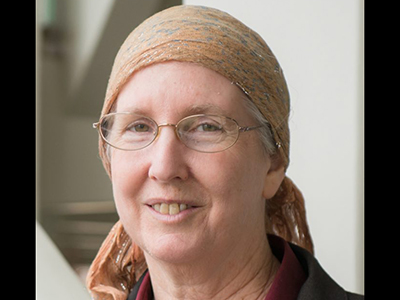
For sustained and continued devotion to collaboratively advancing global aerosol science.
Citation
Dr. Lorraine A. Remer is a research professor at the University of Maryland, Baltimore County and concurrently co-owner of AirPhoton LLC, which develops and applies innovative technology for Earth and space studies. Previously, she worked at NASA’s Goddard Space Flight Center and led the development of the Moderate Resolution Imaging Spectroradiometer (MODIS) aerosol retrieval algorithm and its multidecadal aerosol products.
Over the past 30 years, Dr. Remer has made her mark within multiple communities. She is well recognized for her joint roles as science leader, collaborator, motivator, and cheerleader. With over 200 publications and a Google Scholar H-index = 89, Dr. Remer represents the aerosol, climate, and oceanography research communities. On the one hand, her first-authored MODIS aerosol algorithm paper has over 3,000 citations. On the other hand, her work spans remarkable breadth across multiple disciplines, institutions, and authors.
Dr. Remer’s focus on synergistic activities means she must effectively “herd cats.” As deputy lead of NASA’s Plankton, Aerosol, Cloud, ocean Ecosystem (PACE) Science and Applications Team, Lorraine elevated the community’s interests by proposing a unified aerosol retrieval algorithm that integrated three competing “heritage” algorithms while also including leads from those groups in the development. This is just one example of her scientific and interdisciplinary team-building efforts that advances aerosol science.
Dr. Remer proactively advocates for next-generation scientists and promotes their work. Over the years, she has served on more than a dozen Ph.D. dissertation committees and has mentored numerous high school, undergraduate, and graduate students. Lorraine also developed, in collaboration with Girl Scouts of Central Maryland, the program and curriculum for their Earth Science Patch.
Numerous scientists from around the world have benefited greatly from Dr. Remer’s mentoring, guidance, and/or unselfish cooperation. Her collaboration with different communities and multiple disciplines has included hundreds of colleagues from all six inhabited continents of the world. All have benefited from Lorraine’s easy way of volunteering to lead teams, turning complicated plots and figures into papers, and listening to and alleviating concerns and problems.
Dr. Lorraine Remer uniquely exemplifies the attributes that the Yoram J. Kaufman Award seeks to recognize. She is the embodiment for excellence in interdisciplinary research, inspirational mentoring, and unselfish collaboration. Lorraine not only believes that it takes a village to advance science, but also actively builds and organizes that village. She finds creative ways to encourage unique contributions from diverse individuals and to inspire and bring out the best in others.
—Robert Levy and Hongbin Yu, NASA Goddard Space Flight Center, Greenbelt, Md.
Response
Words cannot express the honor I feel accepting this award created in Yoram Kaufman’s name. I had the ultimate privilege of working for and closely with Yoram during the final 15 years of his life. Those years were filled with the joy of scientific discovery, the excitement of producing an operational product for NASA, and the wonder of building an international web of collaborators who became friends. I learned so much from Yoram. We all did. We learned to take risks, to pursue excellence, to appreciate diversity, and to have fun.
I have been so blessed throughout my career. I had an excellent education with great mentors, an unusual first job as a wind energy consultant with another wonderful mentor, 15 extraordinary years with Yoram, and outstanding research teams, partners, and collaborators. All of these people and experiences allowed me to grow and learn in ways that I never expected when I chose to pursue science as a teenage girl.
Thank you, Robert Levy and Hongbin Yu, for your kind words, your nomination, your scientific collaboration, but mostly for our long-standing friendship. Thank you to Shana Mattoo and the Dark Target Group at Goddard; to J. Vanderlei Martins and the ESI/GESTAR (Earth and Space Institute/Goddard Earth Sciences Technology and Research) II team at the University of Maryland, Baltimore County; to Shobha Kondragunta and Istvan Laszlo and their team at NOAA/STAR (Center for Satellite Applications and Research); and to Didier Tanré, Ilan Koren, Mian Chin, Oleg Dubovik, and Richard Kleidman, for all of the outstanding work we have done together illuminating the aerosol/cloud system in ways that I could never have dreamed possible as that teenage girl.
Yoram was firm in declaring that nobody suffers for science and when science stops being fun, you should stop doing science. For me, the fun never ceases.
—Lorraine A. Remer, University of Maryland, Baltimore County, Baltimore
Field Photos
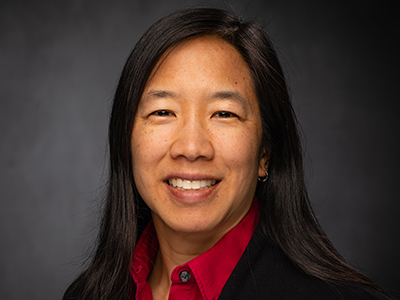
Field Photos
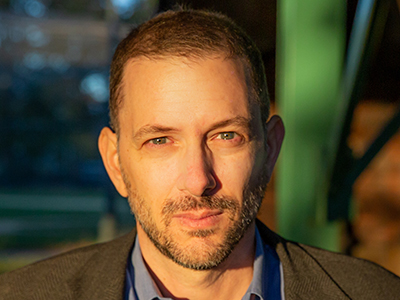
Field Photos
Turco Lectureship
